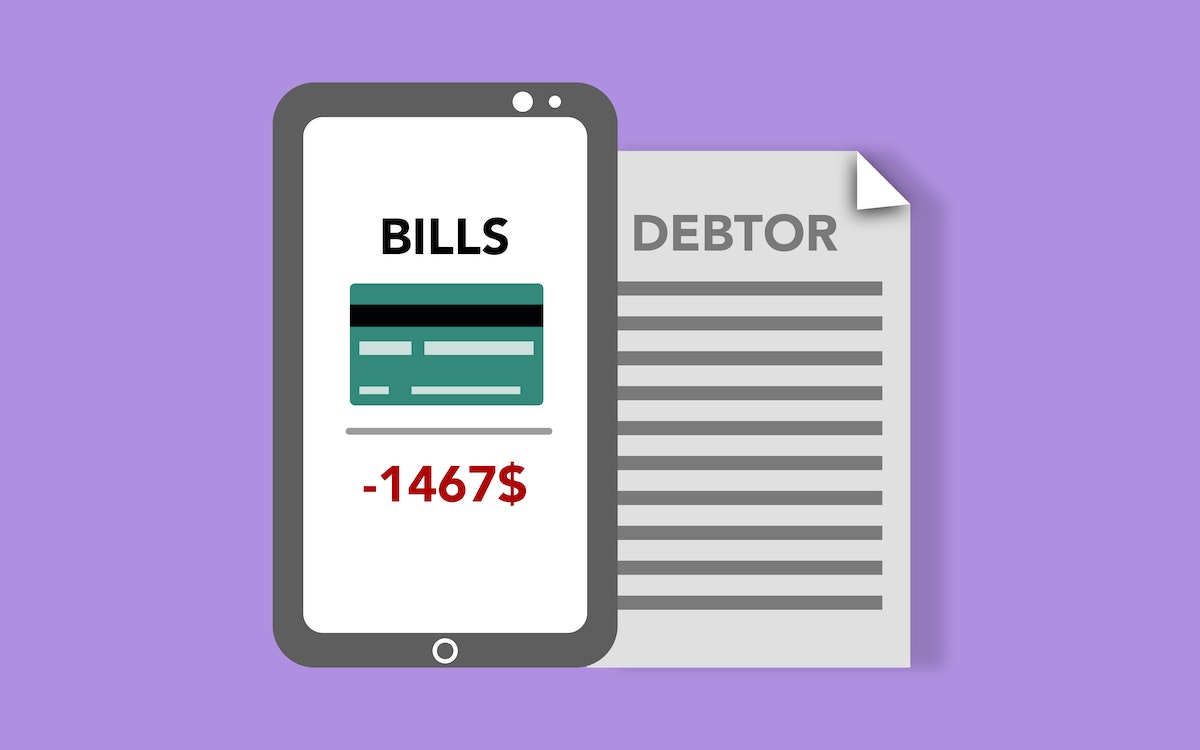Student loan debt is a major problem in the United States.
The total amount of student loan debt outstanding is now over $1.78 trillion, and the average borrower owes over $30,000.
This debt is a major burden on borrowers, and it can have a significant impact on their financial lives.
This article will explore the latest student loan debt statistics.
We will look at the total amount of student loan debt outstanding, the average amount of debt per borrower, and the demographics of student loan borrowers.
We will also discuss the impact of student loan debt on borrowers’ financial lives.
Post Contents
- 1 Key Statistics
- 2 Detailed Student Loan Debt Statistics in 2024
- 2.1 1. The Total Outstanding Student Loan Debt in The United States Is $1.78 Trillion.
- 2.2 2. The Average Student Loan Debt for The Class of 2022 Was $30,950.
- 2.3 3. The average student loan debt for Black borrowers was $44,880.
- 2.4 4. The Average Student Loan Debt for Hispanic Borrowers Was $30,890.
- 2.5 5. The Average Student Loan Debt for White Borrowers Was $40,170.
- 2.6 6. The Average Student Loan Debt for Borrowers from Public Four-Year Institutions Was $32,731.
- 2.7 7. 58% of Adults Aged 18 to 29 Years Reported Having Student Loan Debt.
- 2.8 8. 60% of Adults Aged 30 to 44 Years Reported Having Student Loan Debt.
- 2.9 9. 32.9% of Federal Student Loan Debt Belongs to Borrowers in Their 30s.
- 2.10 10. The Average 62-Year-Old Federal Borrower Owes $40,930 in Federal Educational Debt, Including Parent Plus Loans.
- 2.11 11. 53% of Federal Student Loan Debt Is in Stafford Loans.
- 2.12 12. 34.3% of Federal Student Loan Debt Is in Direct Consolidated Loans.
- 2.13 13. 6.6% of Student Loan Debt Is from Parent Plus Loans, Borrowed by Parents on Behalf of Their Children.
- 2.14 14. New Hampshire Is the State with The Highest Average Student Debt Load per Capita at $39,928 (USD).
- 2.15 15. Utah Is the State with The Lowest Average Student Loan Debt per Student at $18,344 (USD).
- 2.16 16. The Average Interest Rate on Federal Student Loans Is 4.99%.
- 2.17 17. The Average Monthly Payment for Student Loan Borrowers Is $393 (USD).
- 2.18 18. 20% of Student Loan Borrowers Are in Default.
- 2.19 19. Federal Student Loans Are Borrowed by 30% of Undergrad Students.
- 2.20 20. 66% of Federal Student Loans Are Taken out By Graduate Students.
- 3 FAQs
- 4 Conclusion
- 5 Sources
Key Statistics
- The total outstanding student loan debt in the United States is $1.78 trillion.
- The average student loan debt for the Class of 2022 was $30,950.
- The average student loan debt for borrowers from public four-year institutions was $32,731.
- 58% of adults aged 18 to 29 years report having student loan debt.
- 32.9% of federal student loan debt belongs to borrowers in their 30s.
- New Hampshire is the state with the highest average student debt load per capita at $39,928 (USD).
- Utah is the state with the lowest average student loan debt per student at $18,344 (USD).
- The average monthly payment for student loan borrowers is $393 (USD).
- 20% of student loan borrowers are in default.
- 66% of federal student loans are taken out by graduate students.
Detailed Student Loan Debt Statistics in 2024

Here are a few of the many statistics that reveal the growing problem of student loan debt in the United States.
It is a problem that has far-reaching consequences for borrowers, their families, and the economy as a whole.
1. The Total Outstanding Student Loan Debt in The United States Is $1.78 Trillion.
The total student loan debt accounts for $1.78 trillion (USD), which on its own looks problematic. Of this debt, $127.2 billion is from private student loans.
According to data, the accumulation of student loan debt is slowing, which means that most loan consumers are responsibly managing their debt.
(Education Data, Lending Tree)
2. The Average Student Loan Debt for The Class of 2022 Was $30,950.
Keep in mind that while student loan debt accumulates while the student is attending classes, it’s not expected to become due for at least six months after graduation.
That timeframe can differ and students can defer their loans as needed within the guidelines of the lenders.
(College Tuition Compare)
3. The average student loan debt for Black borrowers was $44,880.
Black or African American students owe more, on average, than other ethnic or racial groups of loans that are tracked by the U.S. Federal Reserve.
According to 2023 data, Black/African American students total owed student debt accounts for $44,880.
(Wordsrated)
4. The Average Student Loan Debt for Hispanic Borrowers Was $30,890.
Whether it’s common for Hispanic students to owe less than all races on average every year, the data for 2023 shows that the Hispanic student community owes less than the Black student community.
In fact, Black students owe 31.2% more than the average Hispanic/Latino student.
(Wordsrated)
5. The Average Student Loan Debt for White Borrowers Was $40,170.
The average White/Caucasian student owes just over $40,400 in student loans for 2023. The rates for Caucasian students, along with all ethnic groups and races, has significantly increased since 2001.
(Wordsrated)
6. The Average Student Loan Debt for Borrowers from Public Four-Year Institutions Was $32,731.
The average full cost of a 4-year college degree is $142,000. Some students get grants and some free supplies, which is why you see loans that aren’t as high as the actual cost of college.
The average amount borrowed for public institutions comes to $32,731 (USD).
Private and non-profit institutions accumulate more.
(Best Colleges, DePaul University)
7. 58% of Adults Aged 18 to 29 Years Reported Having Student Loan Debt.
Besides 58% of adults between 18 and 29 years old having student loan debt, there are also 58% of this same group that were getting their bachelor’s degree.
Another 39% of this age group incurred their student loan debt for an associate’s degree.
Moreover, 37% of those with technical degrees in this age group incurred student loan debt.
(Best Colleges)
8. 60% of Adults Aged 30 to 44 Years Reported Having Student Loan Debt.

More education data tells us that 60% of older adult students between 30 and 44 years old also report holding some student loan debt.
Some people are waiting to go to college when they are more mature. Some are going back to school for work.
(Education Data)
9. 32.9% of Federal Student Loan Debt Belongs to Borrowers in Their 30s.
Data shows that 32.9% of all federal student loan debt comes from those in their 30s. Only 15.6% of those under 25 years old have student loan debt.
Additionally, 32.6% of all federal student loan borrowers are between 25 and 34 years old.
A mere 5.8% of federal student loan borrowers are 62 years old or older.
(Education Data)
10. The Average 62-Year-Old Federal Borrower Owes $40,930 in Federal Educational Debt, Including Parent Plus Loans.
Not all student loan debt is owned directly by the student. Student loans also impact parents who borrow money for their children to go to college.
Therefore, knowing that the average 62-year-old student loan federal borrower owes $40,930 (USD) shouldn’t be a shock.
(Education Data)
11. 53% of Federal Student Loan Debt Is in Stafford Loans.
Stafford loans give students a low-interest way to manage the high cost of college, university, or technical school. Students must qualify for this kind of loan.
Over 50% (53%) of all federal student loan debt comes from Stafford Loans.
(Education Data, Govloans.gov)
12. 34.3% of Federal Student Loan Debt Is in Direct Consolidated Loans.
The idea behind the Direct Consolidated Loan is to allow student or parent borrowers to combine two or more federal student loans into one loan with one lower monthly payment.
This kind of student loan option comprises 34.3% of all federal student loan debt.
(Education Data, Federal Student Aid)
13. 6.6% of Student Loan Debt Is from Parent Plus Loans, Borrowed by Parents on Behalf of Their Children.
Parent PLUS Loans include money borrowed by parents on behalf of their college-aged child.
These loans help with expenses not otherwise paid for by other forms of conventional financial aid.
Only 6.6% of all student loan debt is comprised of Parent PLUS loans.
(Education Data)
14. New Hampshire Is the State with The Highest Average Student Debt Load per Capita at $39,928 (USD).
New Hampshire is located on the upper east coast of the United States.
Student loan borrowers from this state hold the highest average student loan debt at $39,928 (USD) per student.
Delaware comes in second at $39,705 (USD) per capita and Pennsylvania is third with $39,375 (USD) per capita.
(Forbes)
15. Utah Is the State with The Lowest Average Student Loan Debt per Student at $18,344 (USD).
New Hampshire has the highest average student loan debt, but Utah, which is on the west side of the United States (over 2,000 miles from New Hampshire), has the lowest at $18,344 (USD).
The next lowest comes from New Mexico at $20,868 (USD) and California is third at $21,125 (USD).
(Forbes)
16. The Average Interest Rate on Federal Student Loans Is 4.99%.

The latest data shows that federal student loans come with an average interest rate of 4.99% for the 2022 to 2023 school year.
For graduate loans, federal rates are at 6.54% or higher. For parents, federal loan rates for student loans start at 7.54% apr.
The 2023 to 2024 year federal student loan interest rates are set to go up to 5.50%. The interest rates for graduates (7.05%) and parent loans (8.05%) will also rise.
(NerdWallet)
17. The Average Monthly Payment for Student Loan Borrowers Is $393 (USD).
The average expected payment per month for student loans is $393 (USD). More than 50% of student borrowers owe over $19,281 in student loans.
Many have yet to make a payment well past the initial due date after the COVID-19 forbearance plan from the government went into effect.
These students have had the option of paying on their loans, but no interest will accrue until after June 30, 2023.
(The College Investor)
18. 20% of Student Loan Borrowers Are in Default.
According to Pew and the United States Department of Education, 20% of student loan borrowers are in default.
Being in default is usually defined as going without paying for at least 270 days. Over a million student loans go into default every year.
(Pew)
19. Federal Student Loans Are Borrowed by 30% of Undergrad Students.
Undergrad students account for 30% of federal student loans. An undergraduate is someone who has yet to earn their bachelor’s degree or an equivalent.
These are students seeking either an associate’s or bachelor’s degree.
Students with undergrad degrees often get management jobs, teaching jobs, or other jobs that require at least two to four years of college.
(Education USA, Prosperity for America)
20. 66% of Federal Student Loans Are Taken out By Graduate Students.
Graduate students are students who are working towards their master’s or doctoral degree.
They can often carry a large student loan debt.
Graduate students account for 66% of all federal student loan debt.
Graduate students can go on to be lawyers, professors, teachers, doctors, etc.
(Education USA 2, Prosperity for America)
These are just a few of the many statistics that illustrate the growing problem of student loan debt in the United States.
It is a problem that has far-reaching consequences for borrowers, their families, and the economy as a whole.
FAQs
What Is Student Loan Debt?
Student loan debt is the amount of money that students borrow to pay for college. This debt can be from federal or private lenders.
How Much Student Loan Debt Is There in The United States?
The total amount of student loan debt in the United States is over $1.78 trillion.
This makes student loan debt the second-highest source of consumer debt, behind only mortgage debt.
Who Has Student Loan Debt?
Student loan debt is held by people of all ages, races, and incomes.
However, student loan debt is disproportionately held by people of color and people with lower incomes.
What Are the Consequences of Student Loan Debt?
Student loan debt can have a significant impact on borrowers’ financial lives.
It can make it difficult to buy a home, save for retirement, and start a business.
Student loan debt can also lead to stress, anxiety, and depression.
What can be done to reduce the student loan debt load?
The student loan debt crisis is a major challenge, but it is one that we can overcome.
By working together, we can create a more affordable and accessible system of higher education that will benefit all Americans.
Here are some ideas coming from the system:
• Reform the federal student loan system to make it more affordable and accessible.
• Increase transparency about the cost of college and the terms of student loans.
• Provide more counseling and financial literacy education to students and their families.
• Promote alternative forms of higher education, such as community colleges and apprenticeship programs.
Conclusion
The student loan debt crisis is a major problem in the United States.
The total amount of student loan debt outstanding is now over $1.7 trillion, and the average borrower owes over $30,000.
This debt is a major burden on borrowers, and it can have a significant impact on their financial lives.
There are a number of things that can be done to address the student loan debt crisis.
One option is to provide more financial aid to students. This would help to reduce the amount of debt that students have to borrow.
Another option is to forgive some or all of the student loan debt. This would provide relief to borrowers and help to stimulate the economy.
The student loan debt crisis is a complex problem, but there are a number of things that can be done to address it.
By providing more financial aid to students and forgiving some or all of student loan debt, we can help to reduce the burden of student loan debt on borrowers and their families.
We hope these student loan debt statistics have helped you better understand the problem and ways it can be reduced.






























